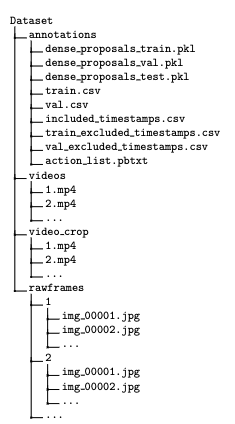但是,我决定进行一些测试,并实现这个函数(以懒惰和存储形式展平包含Ints或[Int] s的数组[Any]),结果表明存储的形式更快,即使刚刚使用迭代元素!这意味着,不知何故,迭代生成器比在内存中构造新数组花费更多的时间,然后迭代它.
令人难以置信的是,它甚至比同一程序的python实现慢约5-70%,随着输入的减少而恶化. Swift是用-O标志构建的.
这里有三个测试用例1.小输入,混合; 2.大输入,[Int]显性,3.大输入,Int显性:
迅速
let array1: [Any] = [Array(1...100),Array(101...105),106,Array(107...111),112,113,114,Array(115...125)] let array2: [Any] = Array(repeating: Array(1...5),count: 2000) let array3: [Any] = Array(repeating: 31,count: 10000)
蟒蛇
A1 = [list(range(1,101)),list(range(101,106)),list(range(107,112)),list(range(115,126))] A2 = list(range(1,6)) * 2000 A3 = [31] * 10000
生成器和数组构建器:
迅速
func chain(_ segments: [Any]) -> AnyIterator<Int>{ var i = 0 var j = 0 return AnyIterator<Int> { while i < segments.count { switch segments[i] { case let e as Int: i += 1 return e case let E as [Int]: if j < E.count { let val = E[j] j += 1 return val } j = 0 i += 1 default: return nil } } return nil } } func flatten_array(_ segments: [Any]) -> [Int] { var result = [Int]() for segment in segments { switch segment { case let segment as Int: result.append(segment) case let segment as [Int]: result.append(contentsOf: segment) default: break } } return result }
蟒蛇
def chain(L):
for i in L:
if type(i) is int:
yield i
elif type(i) is list:
yield from i
def flatten_list(L):
result = []
for i in L:
if type(i) is int:
result.append(i)
elif type(i) is list:
result.extend(i)
return result
基准测试结果(第一个测试用例为100000个循环,其他测试用例为1000个):
迅速
test case 1 (small mixed input)
Filling an array : 0.068221092224121094 s
Filling an array,and looping through it : 0.074559926986694336 s
Looping through a generator : 1.5902719497680664 s *
Materializing the generator to an array : 1.759943962097168 s *
test case 2 (large input,[Int] s)
Filling an array : 0.20634698867797852 s
Filling an array,and looping through it : 0.21031379699707031 s
Looping through a generator : 1.3505551815032959 s *
Materializing the generator to an array : 1.4733860492706299 s *
test case 3 (large input,Int s)
Filling an array : 0.27392101287841797 s
Filling an array,and looping through it : 0.27670192718505859 s
Looping through a generator : 0.85304021835327148 s
Materializing the generator to an array : 1.0027849674224854 s *
蟒蛇
test case 1 (small mixed input)
Filling an array : 0.1622014045715332 s
Filling an array,and looping through it : 0.4312894344329834 s
Looping through a generator : 0.6839139461517334 s
Materializing the generator to an array : 0.5300459861755371 s
test case 2 (large input,[int] s)
Filling an array : 1.029205083847046 s
Filling an array,and looping through it : 1.2195289134979248 s
Looping through a generator : 1.0876803398132324 s
Materializing the generator to an array : 0.8958714008331299 s
test case 3 (large input,int s)
Filling an array : 1.0181667804718018 s
Filling an array,and looping through it : 1.244570255279541 s
Looping through a generator : 1.1220412254333496 s
Materializing the generator to an array : 0.9486079216003418 s
显然,Swift非常非常擅长构建数组.但是为什么它的发生器在某些情况下如此慢,甚至比Python慢? (在表格中标有*.)使用极大的输入(> 100,000,000个元素,几乎崩溃Swift)进行测试表明,即使在极限情况下,发生器也会比阵列填充速度慢至少3.25倍在最好的情况下.
如果这是该语言的内在特征,那么它有一些有趣的含义.例如,常识(对我来说无论如何都是python程序员)会有这样的情况:如果我们试图合成一个不可变对象(比如一个字符串),我们首先应该将源提供给一个生成函数来展开它,然后手将输出关闭到一个join()方法,该方法适用于单个浅序列.相反,看起来最有效的策略是通过数组进行序列化;将源展开到中间数组,然后构造数组的输出.
是构建一个完整的新数组,然后通过它迭代它比原始数组上的延迟迭代更快?为什么?
(Possibly related javascript question)
编辑
这是测试代码:
迅速
func time(test_array: [Any],cycles: Int = 1000000) -> (array_iterate: Double,array_store : Double,generate_iterate: Double,generate_store: Double) { func start() -> Double { return Date().timeIntervalSince1970 } func lap(_ t0: Double) -> Double { return Date().timeIntervalSince1970 - t0 } var t0 = start() for _ in 0..<cycles { for e in flatten_array(test_array) { e + 1 } } let ΔE1 = lap(t0) t0 = start() for _ in 0..<cycles { let array: [Int] = flatten_array(test_array) } let ΔE2 = lap(t0) t0 = start() for _ in 0..<cycles { let G = chain(test_array) while let g = G.next() { g + 1 } } let ΔG1 = lap(t0) t0 = start() for _ in 0..<cycles { let array: [Int] = Array(chain(test_array)) } let ΔG2 = lap(t0) return (ΔE1,ΔE2,ΔG1,ΔG2) } print(time(test_array: array1,cycles: 100000)) print(time(test_array: array2,cycles: 1000)) print(time(test_array: array3,cycles: 1000))
蟒蛇
def time_f(test_array,cycles = 1000000):
lap = lambda t0: time() - t0
t0 = time()
for _ in range(cycles):
for e in flatten_list(test_array):
e + 1
ΔE1 = lap(t0)
t0 = time()
for _ in range(cycles):
array = flatten_list(test_array)
ΔE2 = lap(t0)
t0 = time()
for _ in range(cycles):
for g in chain(test_array):
g + 1
ΔG1 = lap(t0)
t0 = time()
for _ in range(cycles):
array = list(chain(test_array))
ΔG2 = lap(t0)
return ΔE1,ΔG2
print(time_f(A1,cycles=100000))
print(time_f(A3,cycles=1000))
print(time_f(A2,cycles=1000))
我的答案是,我不认为它们几乎和你的结果一样慢.特别是,我将尝试证明循环遍历迭代器应该比为所有测试用例构造数组更快.
在早期的工作中(参见http://lemire.me/blog/2016/09/22/swift-versus-java-the-bitset-performance-test/的相关博客文章),我发现在使用bitset类时,Swift迭代器的速度大约是Java中等效函数的一半.这不是很好,但Java在这方面非常有效.与此同时,Go更糟糕.我向你提出,Swift迭代器可能效率不高,但它们可能只是原始C代码可能的两倍.性能差距可能与Swift中功能内联不足有关.
我看到你正在使用AnyIterator.我建议从IteratorProtocol派生一个结构,它的好处是确保不必进行任何动态调度.这是一个相对有效的可能性:
public struct FastFlattenIterator: IteratorProtocol { let segments: [Any] var i = 0 // top-level index var j = 0 // second-level index var jmax = 0 // essentially,this is currentarray.count,but we buffer it var currentarray : [Int]! // quick reference to an int array to be flatten init(_ segments: [Any]) { self.segments = segments } public mutating func next() -> Int? { if j > 0 { // we handle the case where we iterate within an array separately let val = currentarray[j] j += 1 if j == jmax { j = 0 i += 1 } return val } while i < segments.count { switch segments[i] { case let e as Int: // found an integer value i += 1 return e case let E as [Int]: // first encounter with an array jmax = E.count currentarray = E if jmax > 0 { j = 1 return E[0] } i += 1 default: return nil } } return nil } }
通过这门课,我得到以下数字.对于每个测试用例,前四个方法取自您的代码示例,而后两个(快速迭代器)是使用新结构构建的.请注意,“通过快速迭代器循环”总是最快的.
test case 1 (small mixed input) Filling an array : 0.0073099999999999997 ms Filling an array,and looping through it : 0.0069870000000000002 ms Looping through a generator : 0.18385799999999999 ms Materializing the generator to an array : 0.18745700000000001 ms Looping through a fast iterator : 0.005372 ms Materializing the fast iterator : 0.015883999999999999 ms test case 2 (large input,[Int] s) Filling an array : 2.125931 ms Filling an array,and looping through it : 2.1169820000000001 ms Looping through a generator : 15.064767 ms Materializing the generator to an array : 15.45152 ms Looping through a fast iterator : 1.572919 ms Materializing the fast iterator : 1.964912 ms test case 3 (large input,Int s) Filling an array : 2.9140269999999999 ms Filling an array,and looping through it : 2.9064290000000002 ms Looping through a generator : 9.8297640000000008 ms Materializing the generator to an array : 9.8297640000000008 ms Looping through a fast iterator : 1.978038 ms Materializing the fast iterator : 2.2565339999999998 ms
您将在GitHub上找到我的完整代码示例:https://github.com/lemire/Code-used-on-Daniel-Lemire-s-blog/tree/master/extra/swift/iterators






